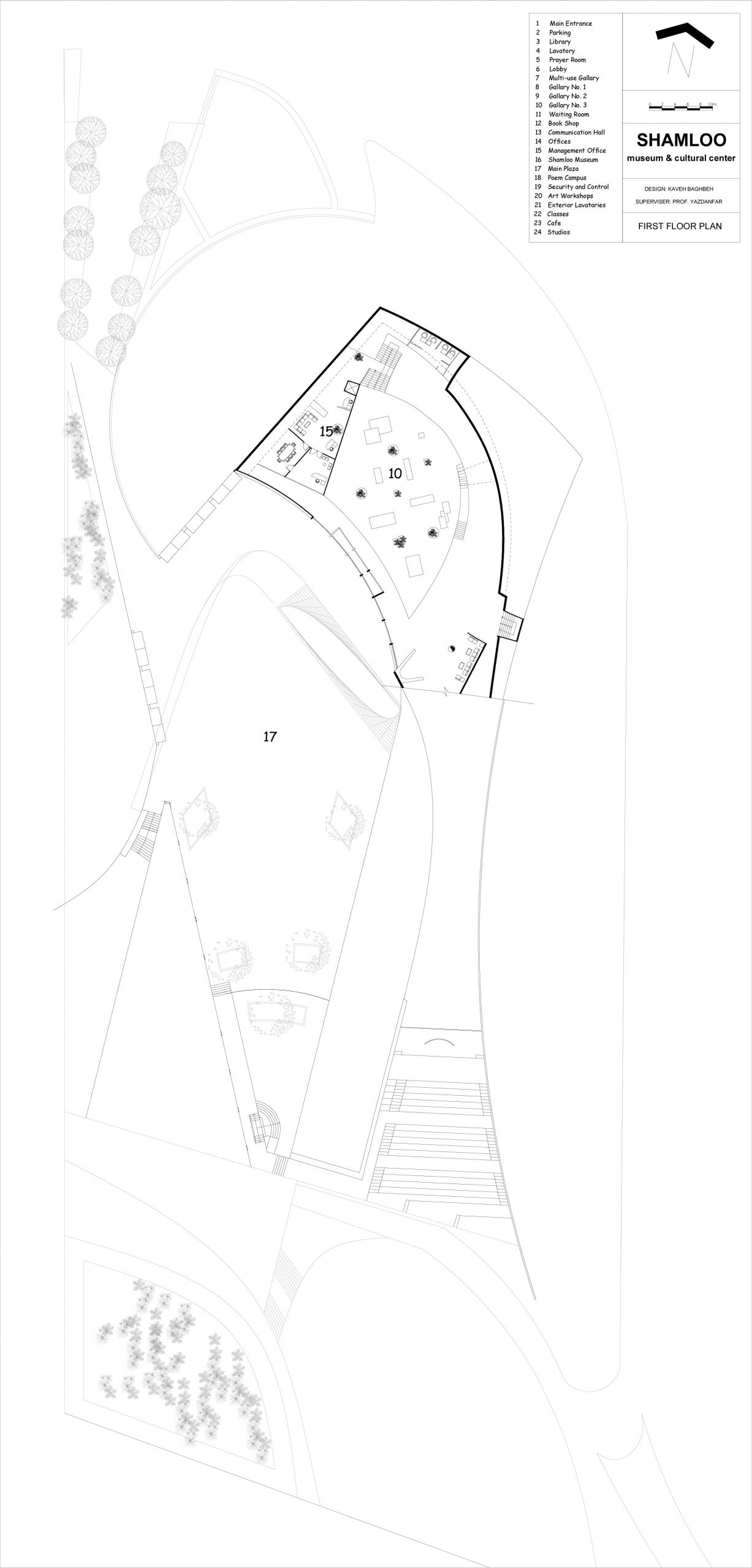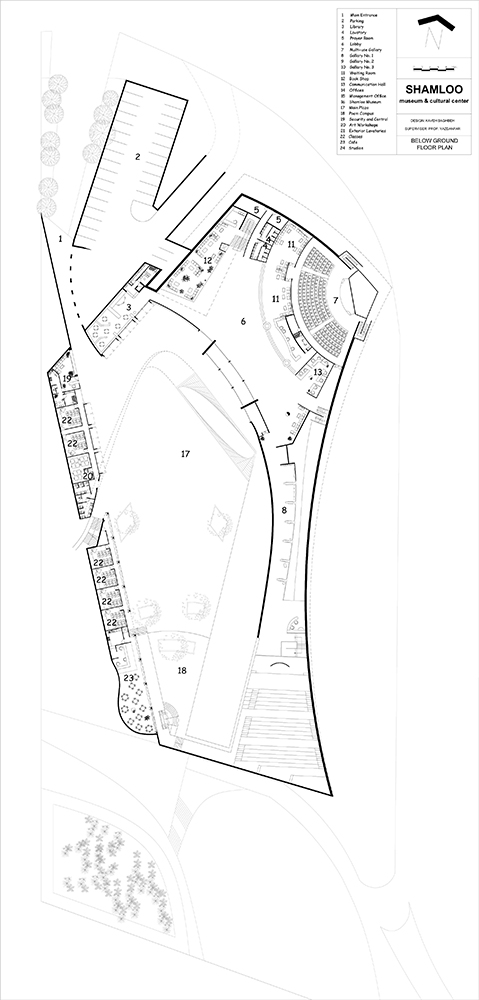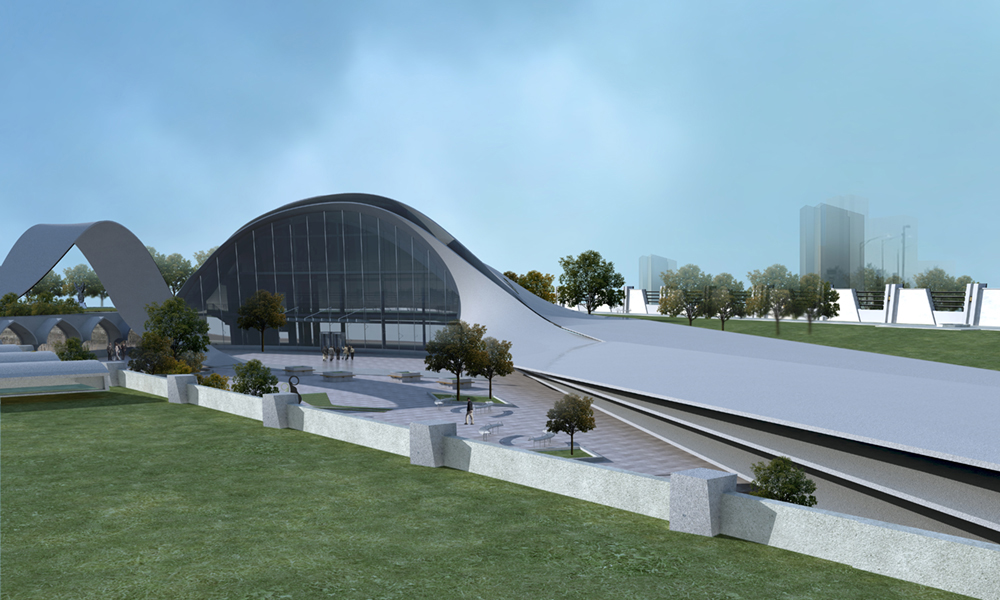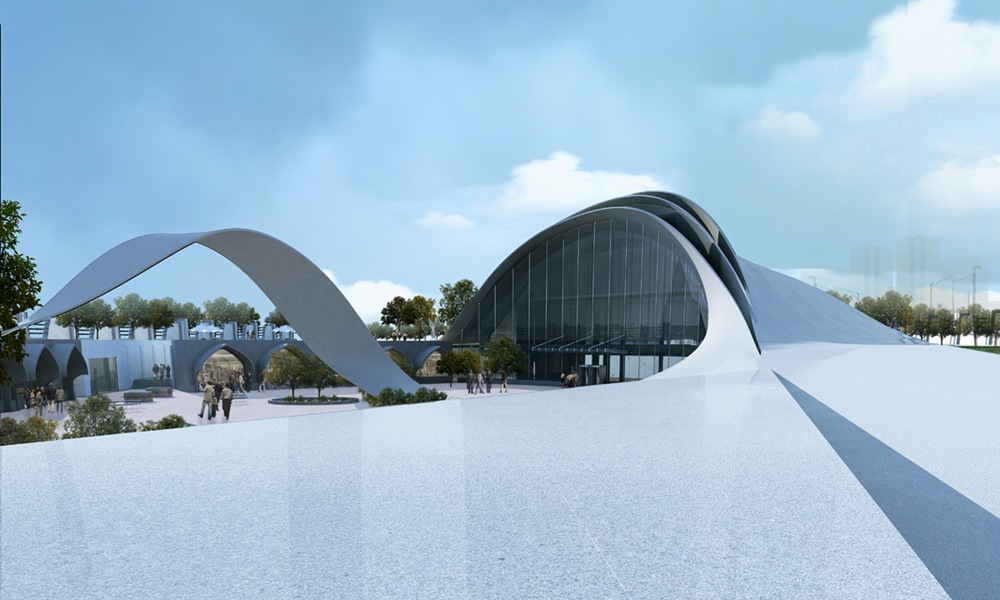Supervisor: Dr. Abbas Yazdanfar
Creating cultural and monumental centers are, with no doubt, among the most effective approaches to conserve and develop the human mores as a heritage for the future. Iranian Poetic literature became globally everlasting with the appearance of prominent people like Hafiz and Saa’di throughout the history and has proved to have remained the same with the precious work of outstanding poets like Ahmad Shamlou.
The provided design also aims to improve contemporary art and culture by honoring his name as well as being a cultural center for art exhibitions and studying poetic literature.
The design process, firstly, started with the review over built monumental places and assessment of formal patterns and design styles so as to create a form in harmonious with the contemporary architecture around the country. Regarding that, selected tombs, museums and cultural sites designed by the latest well-known architects such as Kamran Diba, Hossein Amanat and Houshang Seihun were analyzed. In addition, there was a study, reviewing the related building codes for museums and cultural spaces as well as estimating different space inquiries. Moreover, the literature review of the poet’s work and extracting visual elements beyond the lines, helped in the development of the ideas about the architectural features and spaces which also had to meet the functional expectations and necessary building codes to facilitate the use of this center.
The final design of Shamlou Cultural complex with 8700 square meters of construction area in 3 stories, is located in a 2-hectare flat site nearby the cemetery where the great poet’s body rests in peace. The main concept of the building form recalls the shape of a frozen look to the sunset which illustrates the sorrow of understanding the social ailments and injustice he felt. The complex includes a great plaza to contain cultural gatherings and artistic discourses, three galleries for art conventions, some classes for poetic literature study, library and a café. Finally, in the south end of the building there stands a museum of his private and professional properties to remind us of his 75 years of continuous effort in the poetic literature of Iran.














